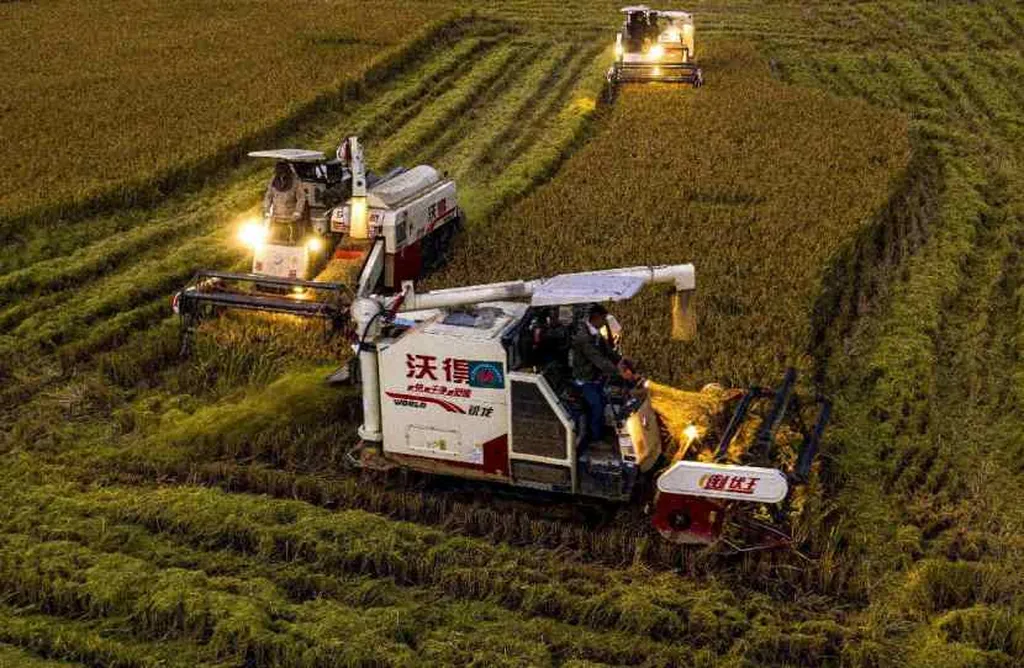In the heart of China’s agricultural powerhouse, Shandong Province, a silent transformation has been unfolding over the past three decades, one that could reshape the future of farming and food security. A recent study published in *Scientific Reports* (translated to English as “Scientific Reports”) has peeled back the layers of this change, revealing a stark decline in core cultivated zones and an alarming fragmentation of arable land. The research, led by Tianwei Zhang from Jintian Industrial Development (Shandong) Group Co., Ltd., offers a sobering look at the state of Shandong’s agricultural landscape and the driving forces behind its evolution.
The study employs a sophisticated blend of Morphological Spatial Pattern Analysis (MSPA) and Landscape Pattern Index (LPI) to map the erosion and fragmentation of arable land from 1990 to 2023. The results paint a vivid picture of a landscape in flux. “The proportion of primary core areas dropped sharply from 82.44 to 30.28% of total arable land,” Zhang explains, highlighting the marked degradation of the agricultural landscape in central and southeastern coastal Shandong.
Yet, the story is not all doom and gloom. The western regions of Shandong have managed to retain more intact agricultural landscapes, characterized by a higher share of cultivated land, more cohesive patch patterns, and stronger spatial aggregation. This regional disparity underscores the complex interplay of factors influencing land use and the potential for targeted interventions to preserve and enhance agricultural productivity.
The study also delves into the relationships among landscape pattern indices and spatial clustering patterns using bivariate spatial autocorrelation (BSA), Pearson correlation coefficients, and the Self-Organizing Map (SOM) algorithm. The findings reveal a strong positive association between the Aggregation Index (AI) and the Percentage of Landscape (PLAND), with certain clusters emerging as particularly suitable for agriculture. “Clusters C, D, and F—characterized by large area shares, high aggregation, and strong connectivity—represent the most suitable regions for agriculture,” Zhang notes.
The study’s exploration of driving factors using Multiscale Geographically Weighted Regression (MGWR) offers valuable insights into the key drivers of landscape metrics. Slope gradient, for instance, shows the greatest explanatory power for the Perimeter-Area Fractal Dimension (PAFRAC), Patch Density (PD), and AI. Meanwhile, NDVI, nighttime light index, and GDP emerge as primary drivers for Connectance Index (CONNECT), Patch Cohesion Index (COHESION), and PLAND, respectively.
The implications of this research extend far beyond the borders of Shandong. As the world grapples with the challenges of climate change, food security, and sustainable development, understanding the dynamics of arable land use and fragmentation becomes increasingly critical. The study’s findings could inform policy decisions, guide agricultural investments, and shape the future of farming practices, not just in China but globally.
For the energy sector, the insights gleaned from this research could prove invaluable. As the demand for bioenergy and agricultural commodities grows, the need for sustainable and efficient land use practices becomes ever more pressing. By understanding the driving forces behind land fragmentation and the factors that contribute to cohesive agricultural landscapes, energy companies can make more informed decisions about investments in bioenergy projects, ensuring their sustainability and long-term viability.
In the words of Tianwei Zhang, “This research provides a comprehensive analysis of the evolution of cropland fragmentation and its driving mechanisms in Shandong Province. It offers a valuable framework for understanding the complex dynamics of land use and the factors that influence agricultural productivity.” As we look to the future, the insights from this study will be instrumental in shaping policies and practices that promote sustainable agriculture and food security, not just in Shandong but around the world.

